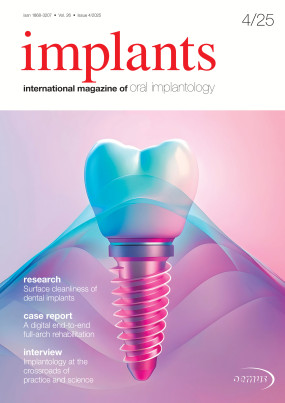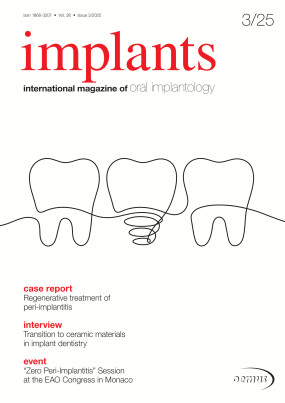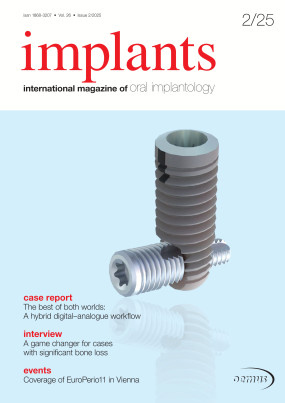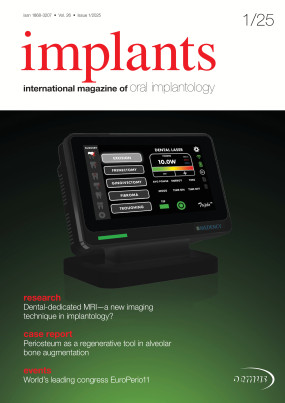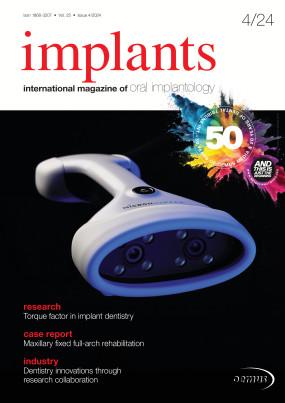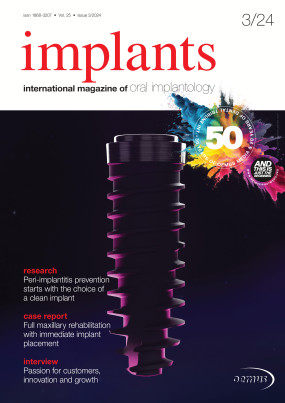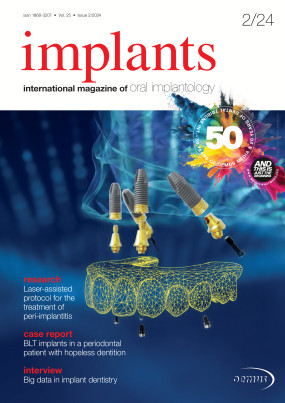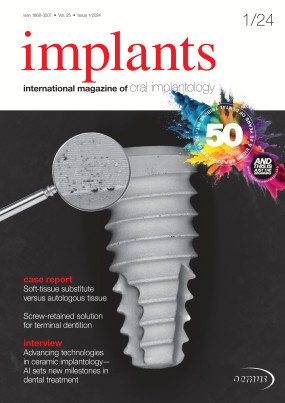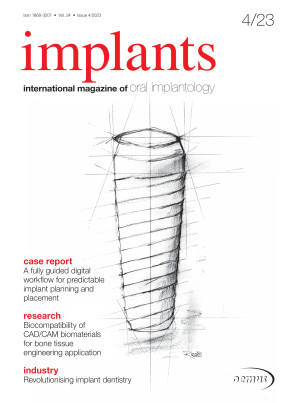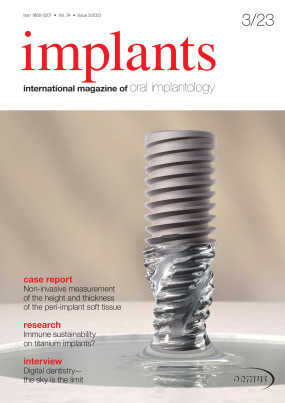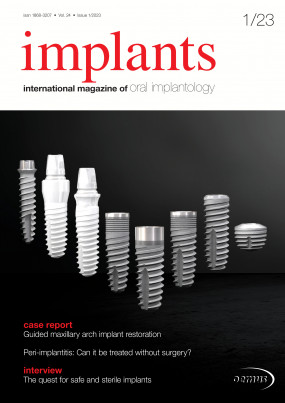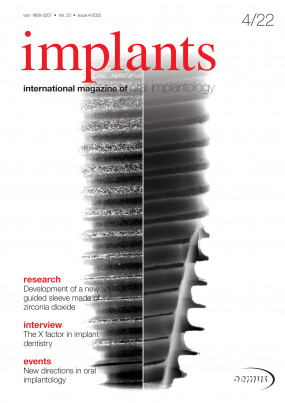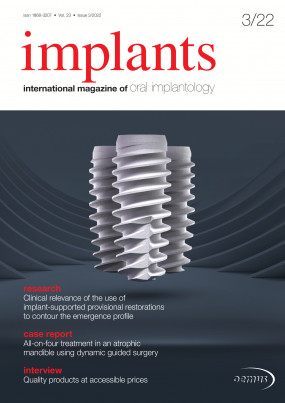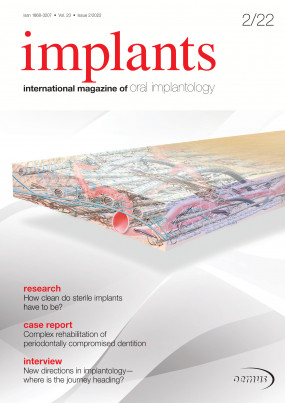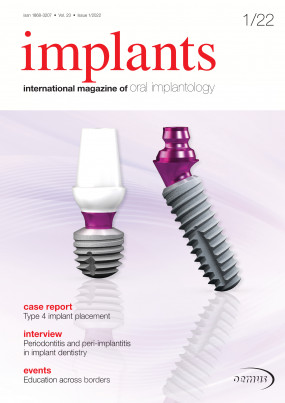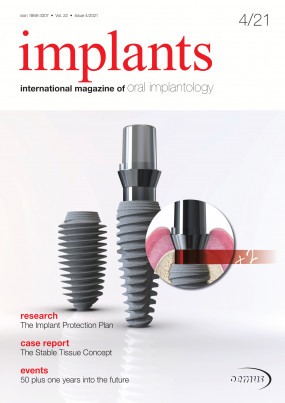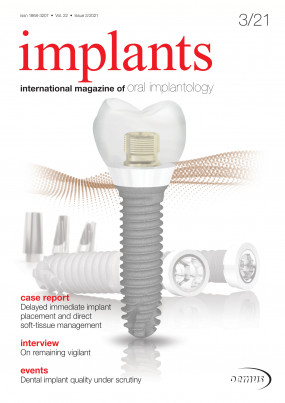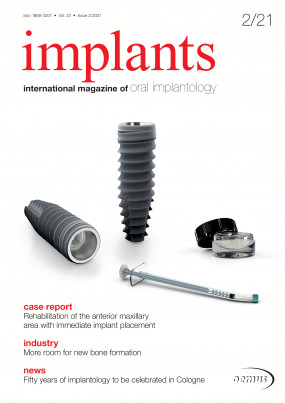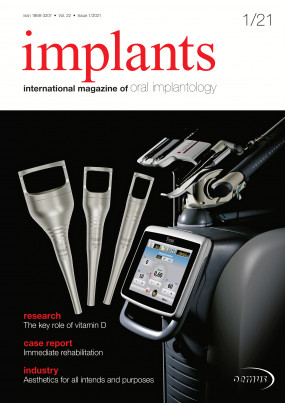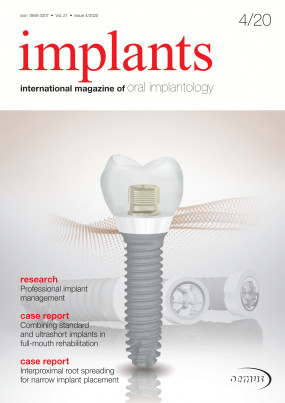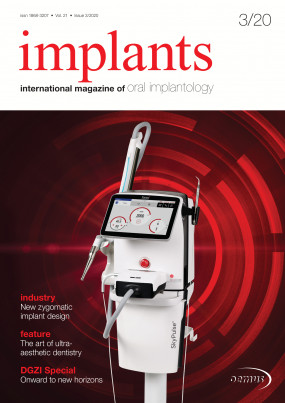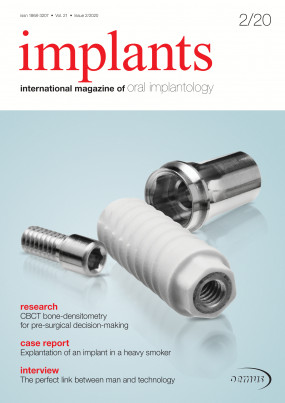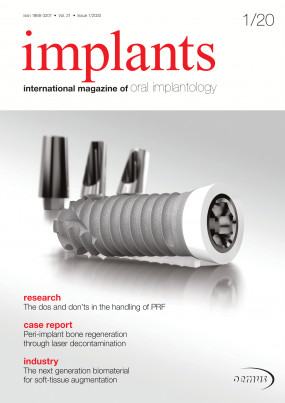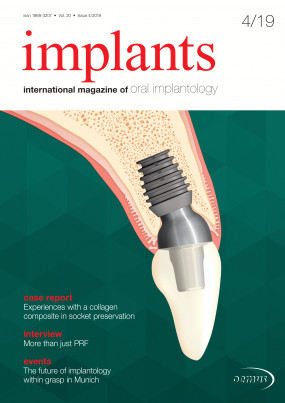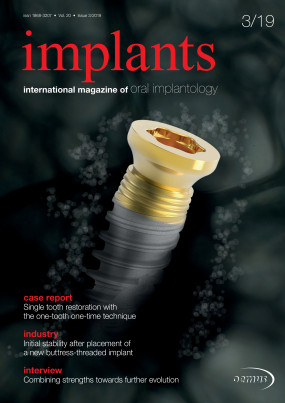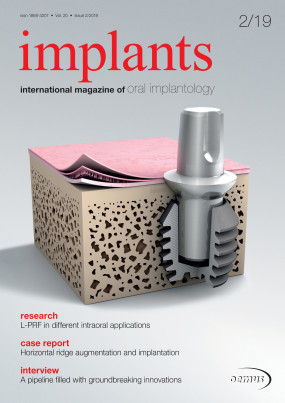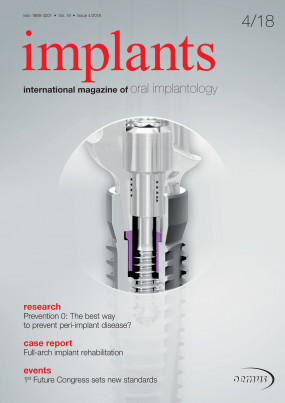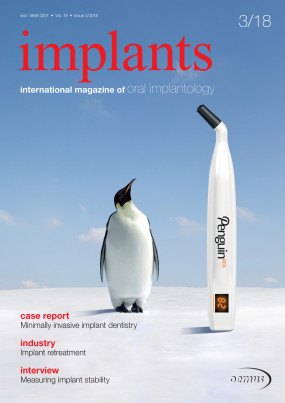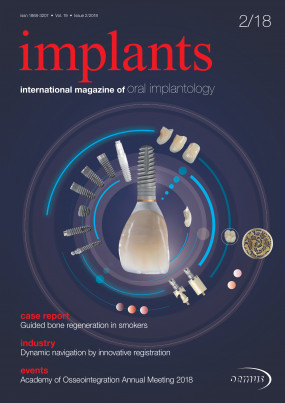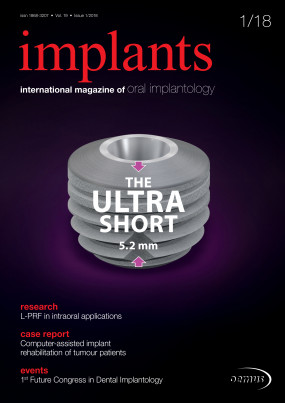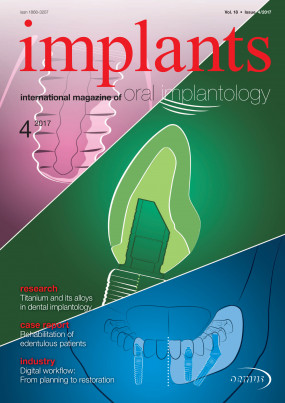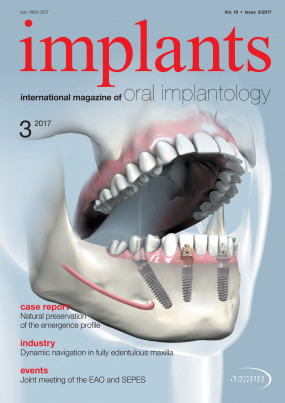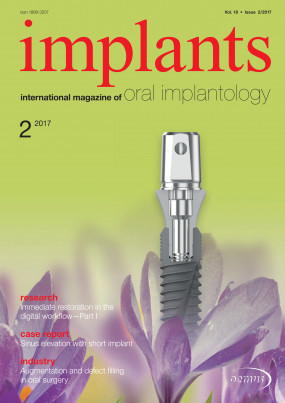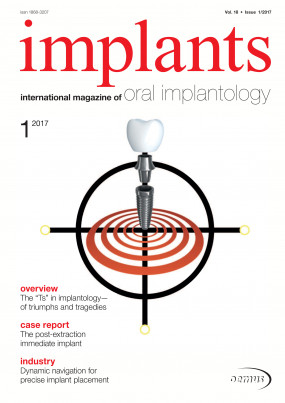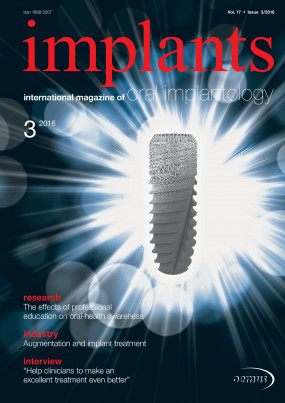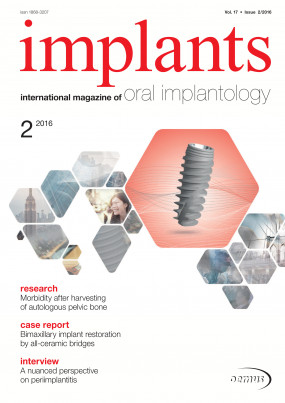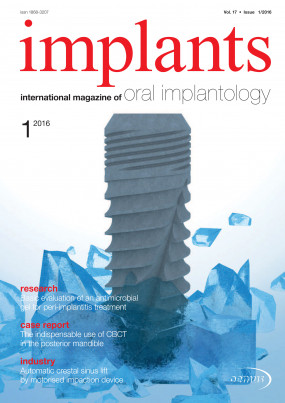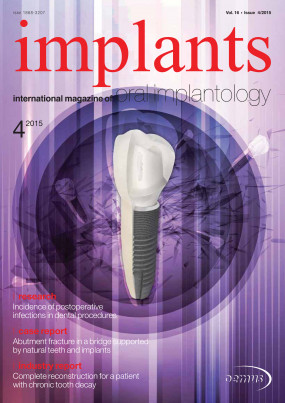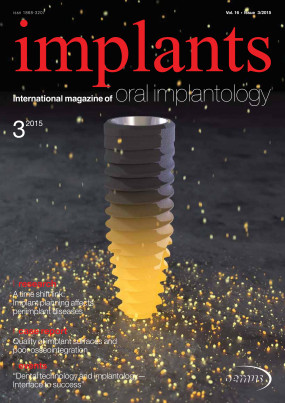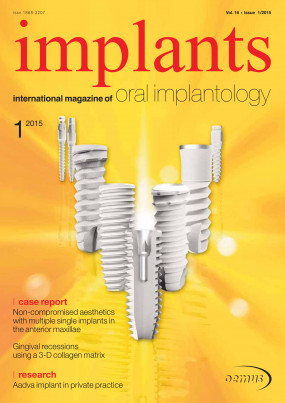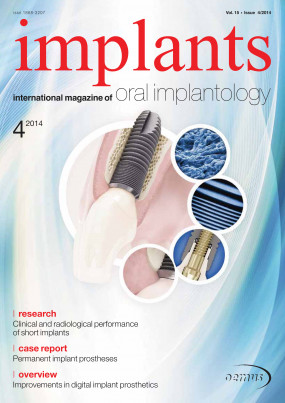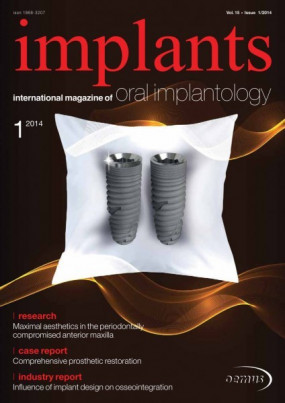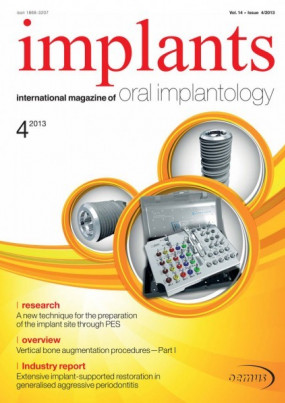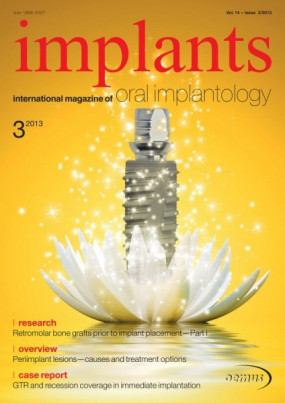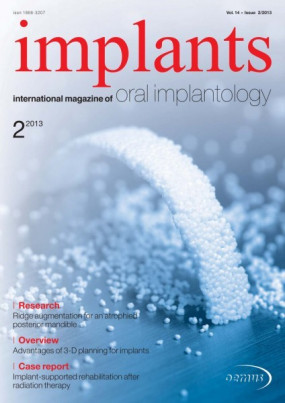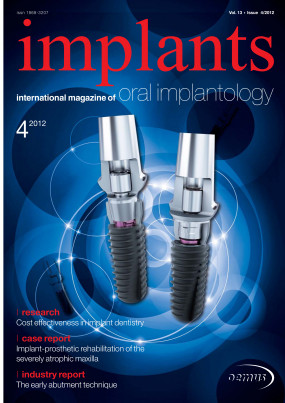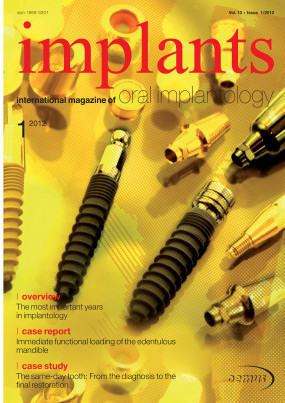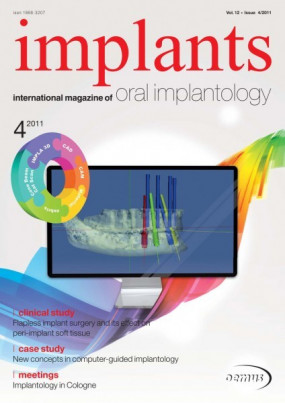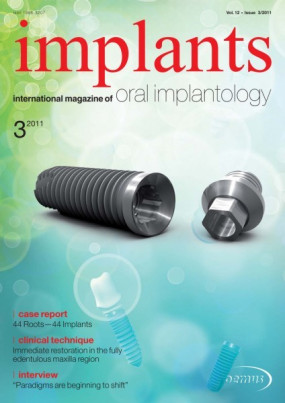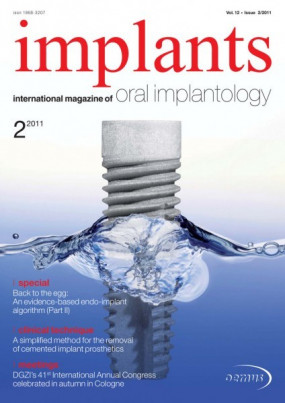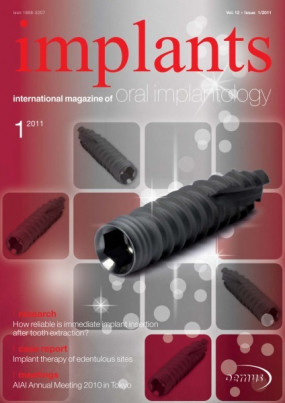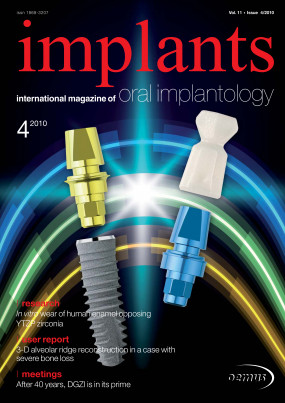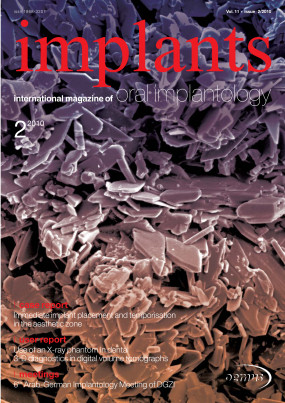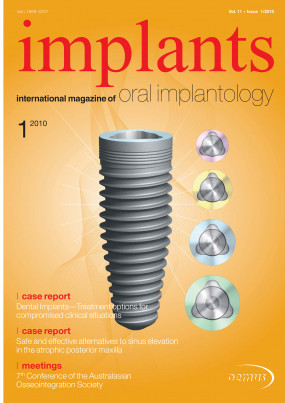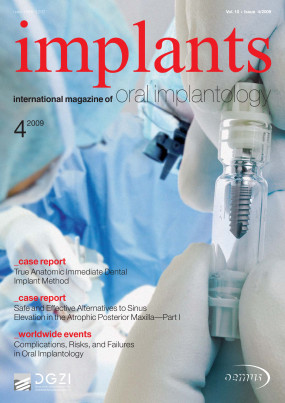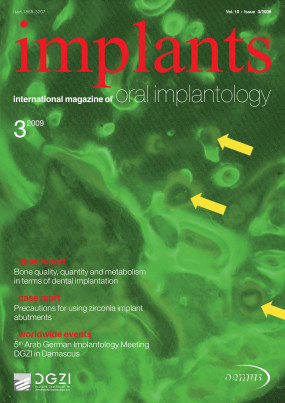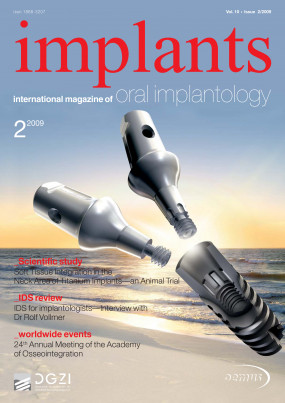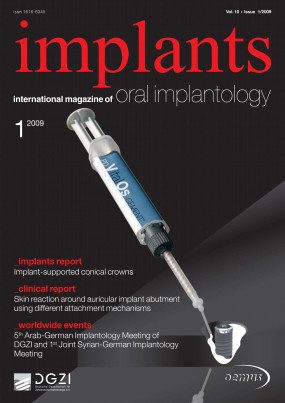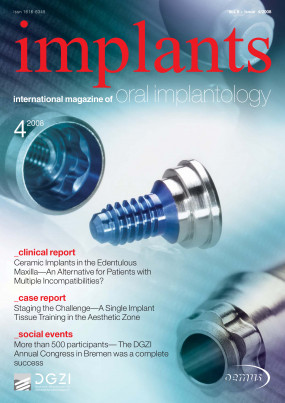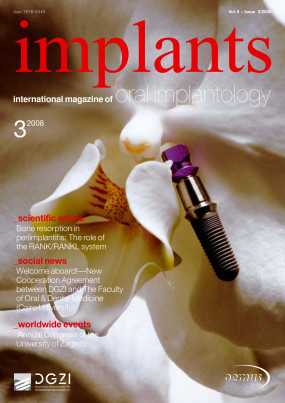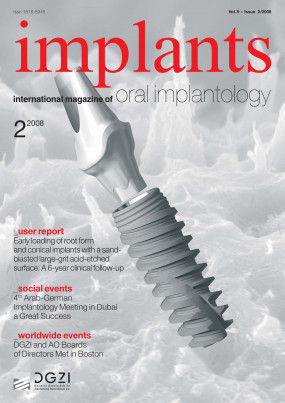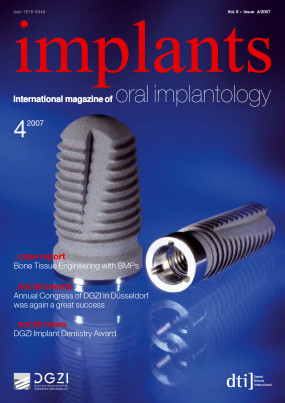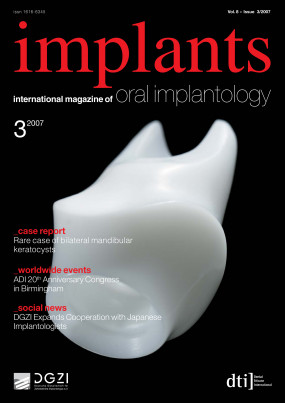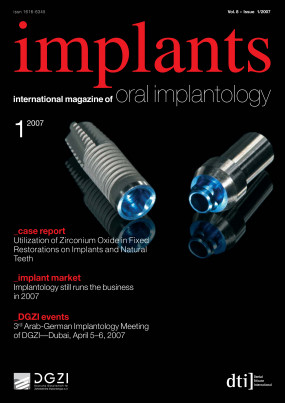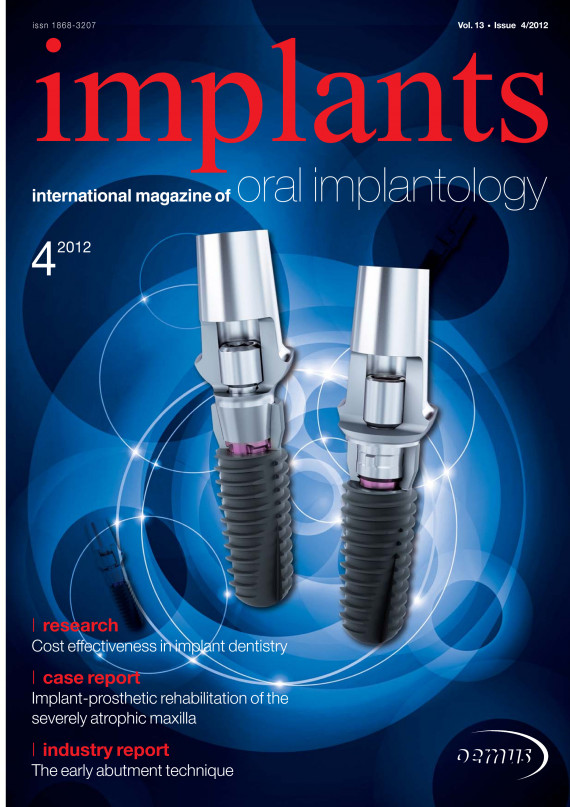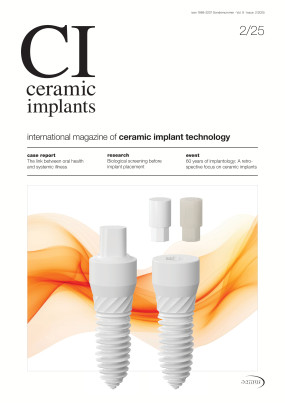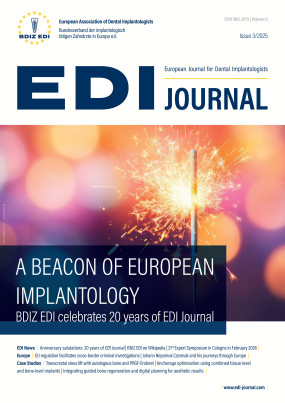Inhaltsverzeichnis
3
With the successful 42nd DGZI annual congress already lying in the past, we can surely say that we were offered an ambitious programme and renowned national and international speakers, as well as a nearly perfect organisation by Oemus Media AG. Titled “Quality-oriented implantation—ways to long-term success”, the congress impressively demonstrated the scope of modern dentistry in general and implantology in particular, but it also and more importantly showed their limits...
6
The number of patients whose teeth are replaced with implants in aesthetic areas has increased greatly. Proportionately, so have the requirements regarding the outcome of treatment. Unlike the early years of implant osseointegration, many are placed in the anterior maxilla and other aesthetically visible regions. Consequently, several studies have been published about implant treatment and its results in aesthetic regions (Belser et al. 2003)...
12
Today, about 65 % of Italian dentists are practising implantology. In Italy alone, over a million implants are placed every year. A survey commissioned by the Italian Society of Osseointegrated Implantology on implant perception among the Italian population found that 68 % of the respondents would request an implant should the need for an artificial tooth arise. One Italian out of three has undergone oral implant surgery. It follows that osseointegrated implants will be offered by a growing number of professionals and be placed in an ever-larger population in the future...
18
The preservation of the natural dentition is the prerequisite in daily patient care. In advanced periodontal disease, the successful realization of implant therapy requires knowledge in patient expectations, clinical diagnostics, proper surgical skills and delegation of basic services to dental hygienists. Implant treatment in severe periodontitis demands a two-step, time-tested approach, evaluating the outcomes of basic periodontal therapy before implant placement...
22
Implant-prosthetic rehabilitation of the severely atrophic maxilla
Prof Dr Gregory-George Zafiropoulos, Aiman Abdel Galil, Germany
Modern instrumentation and improvements in regenerative techniques have facilitated both the surgical treatment and the subsequent prosthetic restoration. Nevertheless, dentists and patients frequently are conflicted when deciding between fixed or removable full-arch restorations. Many patients, especially those requiring extensive rehabilitation, clearly prefer fixed, implant-retained restorations. Under certain circumstances, the patient’s aesthetic demands, however, can be difficult to satisfy with this type of restoration. Aesthetic outcomes are most frequently hindered by bone loss resulting from advanced periodontal disease or by bone resorption following tooth loss. Although several methods can be used to augment hard and soft tissue to meet aesthetic demands, the patient can reject these options or the dentist might not be entirely familiar with the procedure selected. Both scenarios may produce unsatisfactory results that become apparent only when treatment is complete...
28
CAD/CAM patient-specific abutments and a new implant design
Prof Dr Frank Liebaug & Dr Ning Wu, Germany
The objective of any dental reconstruction is the natural, functional reconstruction of the stomatognathic system and the functionally unimpaired or functionally treated masticatory organ. This objective can only be achieved if individual patient parameters and distinctive anatomical features are incorporated into surgical planning and the subsequent prosthetic restoration...
34
The female patient was 40 years old at the beginning of the treatment. The high smile line and the thin gingival phenotype significantly complicated the case. Tooth 11 and tooth 12 had grayish crowns and livid gums. The roots of both of the two teeth had been treated, before a metal pin had been inserted in tooth 11 alio loco. An apicoectomy had also been conducted on tooth 12, which had left scarring with partial retraction of the gingiva. The apicoectomy was not fully healed when the medical history was taken, and the root canal filling at tooth 12 appeared too short apically...
40
42nd international annual congress: DGZI stays on target
Dr Georg Bach, Germany, Claudia Jahn, Germany
Not only was “quality-oriented implantology” the topic of this year’s annual congress of Europe’s oldest implantological society in Hamburg, Germany, but it is also a concept to which DGZI is committed. This commitment showed especially during the press conference on Friday afternoon and continued to be the recurrent theme of the two congress days, starting 5 October 2012.
44
Regenerative therapies require a high degree of dexterity—from the first incision to the last suture. Anyone wanting to remain up to date is dependent on regular practice and trial, because the repertoire of therapies is constantly being supplemented by new techniques and materials. Thus, the Osteology Foundation clearly focuses on hands-on training at all symposia it organises...
45
46
Around 15 million implants are to be found in German mouths alone, with over 800,000 more being implanted every year. So it’s no wonder that this growth area of modern dentistry is also a regular feature at the International Dental Show (IDS) in Cologne. Every two years, implant specialists in particular are among the dentists and dental technicians who attend the world’s biggest leading trade fair serving the dental sector to gather information about new products and current trends. After all, keeping up with progress is vital in this innovation-driven sector. Optimised implant surfaces, individual abutments or software for guided implantation—the trends are so diverse that it isn’t always easy to maintain an overview. That’s why using IDS as an aid to decision-making is an excellent way to keep a practice on the right track with new ideas...
